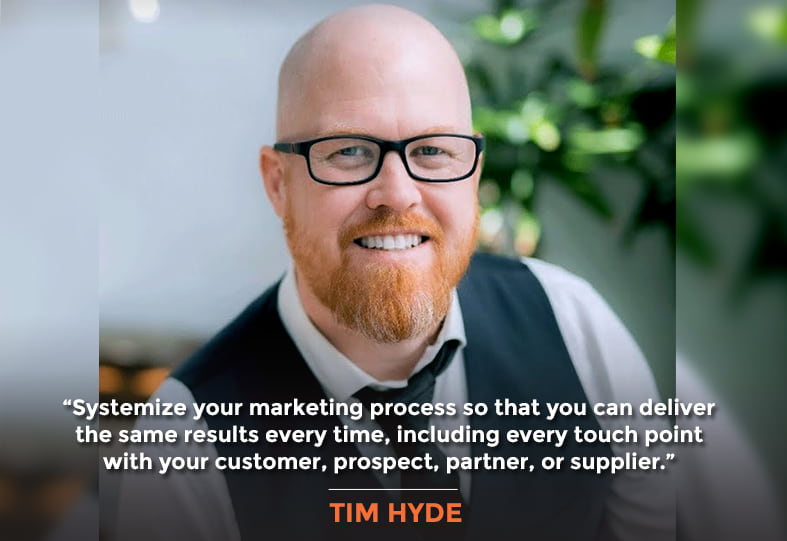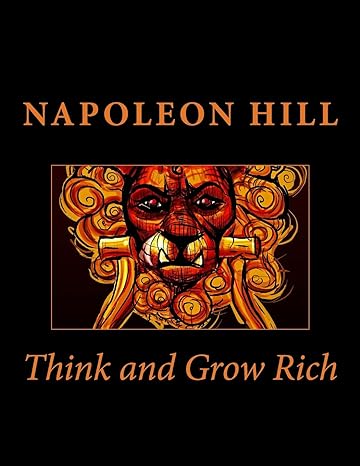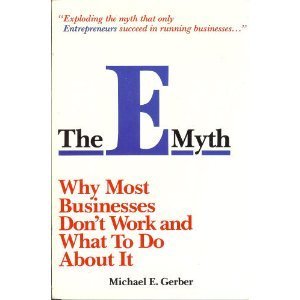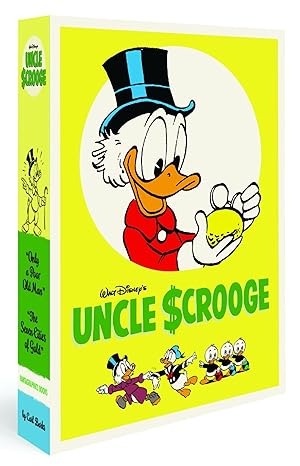If you want to learn how to better implement marketing, sales and automation in a small business context, then you’re in the right place because today we have an expert in that very thing, Tim Hyde.
Tim is the founder and chief automation fixer at his agency, Win More Clients. He’s a business growth strategist and Australia’s leading authority in sales and marketing automation for small businesses. Win More Clients is a multi-award-winning marketing automation agency founded in 2014. To date, Tim has worked with over 1000 clients in 37 countries and has a team in Australia, the US, the Czech Republic, Pakistan and the Philippines.
In this episode, Tim and I talk about the stress of not knowing where the next client is coming from and how to finally fix this once and for all. He shares how an intelligently designed strategy can drive predictable revenue. He shares a framework and set of questions to answer that will reveal where to get your next best client and how to best retain them, even getting them to become advocates and referral sources.
He maps out the buyer journey and how to best engage with the buyer at each of those stages. We also discuss automation and the tools to incorporate into your marketing engine. And now, on with the show.

In This Episode
- [02:15] Stephan asks Tim Hyde to share his marketing journey.
- [10:13] Tim suggests identifying ideal clients by understanding their needs through client interviews.
- [16:34] Tim discusses different marketing efforts for predictable results and analyzes his marketing efforts.
- [19:59] Tim focuses on building strategic partnerships through podcasting, measuring outcomes from activity.
- [23:55] Tim emphasizes the importance of CRM for managing client relationships and following up with leads. He mentioned the CRM tool he was using.
- [27:43] Stephan and Tim elaborate on systematizing marketing efforts for consistent results. They also point out the significance of asking for referrals.
- [32:20] Tim shares insights on automating marketing.
- [36:04] Here’s how you can reach out to Tim Hyde.
Tim, it’s so great to have you on the show.
Stephan, it’s an absolute pleasure to be here. Thanks for the invitation.
I’d love to hear your origin story, how you ended up focusing on automation and winning more clients as a way to serve humanity in this life, and how all this came about.
I’m actually going to blame Uncle Scrooge. I have this vague recollection. My parents have validated it, so I know it’s reasonably true that I read an Uncle $crooge golden book as maybe a four- or five-year-old. It’s my favorite book. He used to cart it around everywhere. And the one thing that I sort of remember from that to this date is that I don’t know what Uncle Scrooge does for all his money. I just remember rowing his robot around his giant, giant money pit and then diving in, and it looked like he was having so much fun. I thought, I want a money pit.
So, as a six-year-old, how could I create my money pit when I moved to my current hometown? I arrived at the idea of founding a circus. I invited all the neighborhood kids and charged them about $0.20 for admission. It might have been $0.10 admission, and I had them all dress up and act in my circus for money. Everyone was having a great old time, as you can imagine. With the proceeds of that first business venture, I bought two things. I went down to our local street markets and bought a brass inlaid oak cigar box, which neatly fit all my coins into it. So that was my money pit of sorts, my first little money pit. And the second thing I bought was 100 $0.01 sweets from our local shops on the way home from school. It was in a sandwich bag.
One of the biggest stresses for entrepreneurs is not knowing where your next customer is going to come from. Share on XSandwich bags aren’t as big as they used to be—I swear, on this one’s hands, just bigger. But it was so full of chocolate and lollies and sweets and stuff that it didn’t actually fit. The little corners were just sort of twizzled over a little bit to hold everything in. The entire bag of sugar on the wall came from school.
I don’t know if it was the sugar high I got or something like that, but I thought this was the best thing ever—that I could have fun, make money and turn it into sugary sweets.
And thus began the addiction.
Thus began the addiction. I tried a whole bunch of things, sort of, as a teenager, but somehow, I managed to develop this knack for finding opportunities that maybe others didn’t see. So I introduced a sausage sizzle to the school fate as a ten-year-old or something. That sausage sizzle and drinks made more money than the rest of the fate put together because, previously, it was all just cakes and tea. And I’m like, I don’t want cake and tea. I want a sausage in a bread roll and a Coke. I bought Ugg Boots from China and sold those made and sold wine racks door to door; you name it. I tried a whole bunch of different stuff.
As an adult, going into it pretty much just as a precursor to the Internet was sort of becoming a thing, and writing code. And in the late nineties, a maid of mine came to me and said, let’s start this website that we eventually called the RiotACT. Okay? And pretty much just sort of one of them, I guess, was the first social media site in Australia as we know it because it was a community-driven platform where people could submit their own content and engage with other people’s content. What we now know is social media.

That took traction through the noughties and ended up teaching a lot of marketing agencies what digital marketing was in our hometown. But the thing that I found that kind of hearkened back to my experience was that marketing was this journey between cut people who didn’t know who your business was right through them becoming raving fans. Now, I know you’re in Miami, Stephan. So the Dolphins, for example, as a football club, are really good at getting people to pay them to do their marketing for them, right? So you see fans running around in all your Dolphins gear, right? But the Dolphins haven’t paid you to promote them.
You have paid them for the privilege of doing so. And so we have this customer journey between. I don’t know who the dolphin Miami Dolphins are right through to, but I am paying you for the privilege of promoting you the other way.
That’s the whole thing, even wearing face paint.

Face paint, whatever. Okay. Yeah. They’re not paying you for the privilege of doing so, of promoting them. It’s the other way around. And I liken it to be my experience. And if you recall, the code is usually a little bit better constructed now before it gets released. But members of our age remember the sort of Microsoft Blue Screen of Death or the little spinning wheel on your screen that just spins while it’s trying to load something.
That’s very much what happens in the marketing context as well. That bit of code on that error message you’re getting in your software is just because it’s gotten to a point in the code somewhere between line one and line 158 million where it doesn’t know what to do with the inputs. So it just hangs and doesn’t know what to do next. Your marketing journey is very much the same. You’ve got clients who don’t know who you are, discover who you are, and if they don’t know what to do next, they get that sort of blue screen of death, wander off into the wilderness, and buy from somebody else. And so we need to be deliberate about that. Through my experience with RiotACT, I saw this a lot with customers. We would generate an absolute ton of interest for them, and they would go, “oh, it didn’t work. I’m going,” I can see that 6839 people clicked on that 300×300 banner.
So where do they go next? What was the bit of broken code in your marketing context that meant you didn’t take people to the next step? Just like your kids, your kids don’t want to do what you want them to do, right? They’ve got other priorities. Your customers have the same as well. If they don’t know what to do next, they get a blue screen of death, wander off, and go and do something else, which is not what you want them to do; it’s what they want to do. So when I left that in 2013 or 2014 and started to win more clients, I was very much looking at what this customer journey is. Let’s map it out. What are the things we can do in a marketing context and systemize it through automation that makes the next step easier for your customers than what they want to do?
Yeah. What comes to my mind as a South Park ridiculous thing is the Underpants Gnome. Do you know about the Underpants Gnomes? Step one is steel underpants. Step two is a big question mark, and then step three is profit. That’s all the stuff in between getting the unfamiliar person to become the raving fan. There’s a big question mark in there.
Yeah, absolutely. When we’re in a really buoyant economy, it covers up a lot of sins in your marketing. It’s like building a sort of house of cards on a table. But as soon as we’ve seen this over the last couple of years, with all the disruption that COVID’s caused and rising interest rates off the back of that as well, is that the table? Someone’s shaking the table a bit. If you haven’t got solid foundations in your marketing and sales process, your whole house of cards starts to tumble down and collapse. And as much as it’s fantastic to think and grow rich, have an amazing team, be an inspiring leader, and do all that sort of stuff, The oxygen for your business that allows it to function effectively is the effectiveness of how good you are at sales and marketing.
By the way, are you a fan of Think and Grow Rich?
Yeah, in some ways, yes. In other ways, this is a giant dose of the obvious.
Well, there’s some nonobvious stuff in there. One of the 13 principles in that book is sexual transmutation. I’d say that’s pretty nonobvious. Anyway, so I digress. But the idea of building these systems and automation and demystifying that big question mark, that step two is something that you’ve become quite good at. So maybe we could walk through some of your frameworks, some of the tools you use, and some strategies and techniques.
Yeah, I think a lot of it’s about the organization. Still, even before organization, we’re looking at, I guess, three real stages in building a sales, sales and marketing engine that consistently delivers. And I know, I mean, if you’re listening to this, you probably think one of the biggest stresses for entrepreneurs is not knowing where your next customer will come from.
If your sales processes don’t have solid foundations, your whole house of cards will start to crumble.
That kind of nightmare keeps you up at night and going. Okay, I just lost a client. I don’t know where the next one’s coming from. And particularly for small businesses, obviously a little bit different at the enterprise sort of scale, but to the same effect. Right. If you know where your next customer is coming from, it gives you a lot of confidence, clarity, and certainty about what you can commit to in your business. If we can address that first thing, and I think one of the first areas we need to do is get our strategy right.
If you go out to a marketing agency right now and say, help me, they will sell you the thing they’re good at. So, if you go to an SEO agency, SEO is the hammer to bang all the nails. If you go to a Google Ads company, Google Ads is the savior for everything. If you go to someone doing outreach and appointment setting, well, that is the thing that will solve all of your woes. That’s not necessarily the case. We really need to understand who our customers are and how they want to buy from us. Where are they? How do they want to buy from us? So, if you’re selling to moms and dads, get involved in the P&C at your local school because that’s where many moms and dads hang out.
So, P&C, is that essentially the PTA?
So, parent and committee school thing? I’m sure there’s an equivalent term.
Yeah, PTA is what they do. Parent Teacher Association.
Yeah. Get involved in that, and you’ll find a bunch of people who can have your thing. That’s probably the first place to start mapping out. Well, now that I’ve found this person who represents my ideal client, I see many people involved in things like BNI and other networking events, and I constantly see people stand up and say, a great referral for me? Is it anyone or somebody? Now, anyone and someone is not a really good way of getting your customer to go, “Oh, is that who you are?” And we have this fear, I think, of FOMO, of missing out if we don’t say everyone’s my client, even Facebook did it. When Facebook first started going, they ran ads for the Facebook ads platform, saying there were a billion people on Facebook and that all of them could be your clients.
That was one of Facebook’s ads for their ad platform. Ironically, I’ve seen LinkedIn for advertising on Facebook as well. But that’s another thing. They’re not all your client. In fact, for most businesses, if you were to get a hundred clients right now of your ideal customer, you would be completely overwhelmed. You probably couldn’t even take them all on simultaneously unless you’re doing retail. One hundred customers in a supermarket is not very many.
However, for most professional services, businesses also trade or manufacture 100 new customers, which would probably almost break you. You wouldn’t know what to do with them.
Understand who your customers are, where they hang out, and the journey you want to take them on.
Also, it’s a quality problem, for sure.
It’s fantastic. More sales solve a multitude of sins. Not all of them, quite a few. So, really understand who your customers are, where they hang out, and the journey you want to take them on. Right. So what is it that customers will feel emotive when they discover you, and what do you want them to do? And that’s where this sort of art and science, I think, blends. So if it’s not obvious to them when they feel that emotion about what you want them to do next, they’ll almost never do it.
So, let’s walk the listener through how this framework works and use you as an example.
Okay, so let’s pick mine, right? So we typically work with professional services businesses about seven figures, right? They’ve got a small team. They’re looking to grow, and they’ve got a beast that they need to feed. So there might be somewhere between one and 5 million as a typical client for us. But they’ve got a lot going on in their business, right? They know they need more customers. They know they’re probably not onboarding really well. They know that their team is keeping them up at night. They know they could get more productivity from the team, that sort of stuff. So we would go and look and say, “Well, who are your best clients?” And actually, ask those clients why they buy from you.
It’s something we almost never do. We don’t go to our customers and ask them what they bought from us. We’re just afraid of the answer for some reason. We assume we know, but let’s find out why. We’ve got the idea that not all of our clients are the best.
Your best clients are someone you love talking to, who refer you regularly, who pay their invoices on time, and who buy all of your solutions, not just part of your service offering. It’s not to say we don’t have those other ones that you kind of like when they call, and you pick up your phone, and you’re like, who is this guy? I don’t want to talk to them today.

These are great distinctions, by the way. This is really good stuff. I think the person who’s listening, driving or in the middle of a workout needs to listen to this episode when they can write down, take notes, and answer these questions for themselves.
Yeah. If you were to put a lineup of all your clients that you’re working with right now in line and go and order them from best to worst. It’s a thing that people don’t do. But let’s look at the characteristics of your worst clients: haggle on price, always demanding, late on payment, don’t show up to appointments, and don’t commit to their side of the response; you know, they don’t take any responsibility for what they do. When they call, you cringe and go, I really don’t want to talk to that person again. And yes, they’re giving you money, but we get so attached to the money and not whether this person is actually helping me grow my business that you most want to start saying, I’d be happy to refer you to someone else. They’re your D clients. They’re the end of people who go. If I hadn’t had you in my life, it would have been much better.
To me, this is opportunity cost. If you take those D clients and kick them to the curb in a nice, respectful way, then you make room for more A clients. But if you believe in scarcity or you kind of buy into the illusion of scarcity, then you think that if I don’t have these D clients, then I might not end up making enough money to pay my team.
Every single touch point will leave one of three experiences: a positive, neutral, or negative one. This is a fundamental baseline for your marketing. Share on XYeah, it’s right. But your team doesn’t like working with them either. If your team doesn’t like working with them, they’re like, “I don’t like my job so much.” And then you have staff churn. So, it’s not necessarily about top-line revenue When I focus on profitability. The purpose of your business is to make a profit for you and to be able to spend on the lifestyle that you want, not just to churn out customer outcomes. I think customer outcomes are a byproduct.
The main purpose of your business is to make a profit for you as the owner. So take a long, hard look at which clients you’re working with. Your D clients are the ones you don’t make as much profit on because they consume more of your time and your team’s time to deliver to. So that’s one of the first things we want to look at.
When we start to isolate the best clients, we need to start looking at their commonalities. Where are they? How did they buy from you? Who were they referred to? What process did they go through to purchase from you? Then, really start to isolate what is generating those ideal clients and do more of that and less of the other stuff. We’re not trying to do 6 million different sorts of marketing channels. Work on the stuff that gives you your best clients.
Knowing where your next customer is coming from gives you a lot of confidence, clarity, and certainty.
Most often, that’s from strategic partners. Go and build a strategy around building more strategic partners. If those people come from LinkedIn and you spend five minutes a day on LinkedIn and 6 hours a day on Facebook or Instagram, stop spending time on Facebook and Instagram and spend more time on LinkedIn, not just because someone said that you needed to do it or you read it in a forum somewhere, that this is the best strategy that you should do. That’s the second part, which is about building a lead generation system that gives you predictable results for the inputs you put into it.
So don’t just keep doing your podcast for the sake of doing your podcast. Start looking at that and ask if my podcast is actually moving the needle on my key metrics. So I spend, because I run a podcast as well, Stephan. If I spend 2 hours a week recording podcast episodes and another thousand dollars having it produced and distributed and all that sort of other stuff, well, that comes out.
That’s a resource cost to your business. So, what metric are you measuring to see whether that resource cost is actually delivering your result? Because if it’s not, stop doing it. Spend your resources more effectively. There are not enough companies I see, and having worked with a few of them in different sectors, I now actually know what moves the needle in their business. We just do stuff for the sake of doing stuff. We run social media campaigns because we think our business needs a social media campaign. We run radio ads that may or may not work because the salesperson was really fantastic.
So, is there something you cut out of your marketing because you realized you needed to spend your resources more effectively? Was there some social channel you shut down or a podcast you used to do that you don’t anymore?
Your best clients are someone you love talking to, who refer you regularly, pay their invoices on time, and buy all your solutions, not just part of your service offering.
I’ve done a few podcasts that I don’t do anymore. It’s something we measure every single week in our business. What are we doing, and is it generating a result? I’ve dropped out of networking groups that weren’t generating results, having tried a bunch, not just the network, but what was their messaging we were putting in through that network. But you don’t need that many things, right? Pick one channel and actually develop that out and measure it. And it’s what we call. Until that gets predictable, you know I get this much out if I put this much in. Hopefully, what you get out is more than what you put in.
So, let’s take the example of a podcast you no longer do. How were you measuring the results? What sort of metrics? And then how did you make that decision to stop doing it?
Let’s look at the podcast itself, not so much, but my current podcast, which I use largely to build strategic partnerships. So, off the back of every podcast that I record, whether it’s a guest episode like we’re doing right now, Stephan, or whether it’s my own, My objective from that is to not necessary to get customers straight away because it’s not designed around like a let’s discover your problems kind of thing. It’s not designed as a podcast sales funnel or necessarily designed to go; what’s my audience? But if you’re doing podcasts, look at if my audience is increasing. Am I getting more visits to my social profiles? Are those driving more traffic to my website? Am I increasing in certain rankings? So look at those.
One of the measures I look at is mine because it’s very focused on developing strategic partnerships, which is the conversation we have before and after the podcast. The recording says how many of these people are active referral partners in that they are referring to me. So, in my case, my podcast is, can I build strategic partnerships? And are those strategic partnerships I’m having regular calls with referring businesses? So again, we’ve got to measure what is the outcome we want from our activity, not just it’s more profit. Right.
That’s too big a step. Break it down into smaller steps and say, if I do this thing, what is the result I’m measuring, and what is the next thing I do after that?
Build a strategy around building more strategic partners.
You had previously asked some questions that were part of this framework you walked through. Where do your ideal customers hang out? What will they feel when buying your product or service, and what do you want them to do to get over the hurdle of going from non-customer to customer? Those sorts of questions? I’d love to hear how you would answer them for your ideal client and marketing machine.
Yeah, for me, a lot of my business comes via referral, so I’m heavily focused on building and systemizing that. So, the third part of our framework revolves around lead and relationship management. This is where it’s really important to have a CRM and a properly functioning CRM that you use in your business daily to manage where those relationships are up to. So there’s no point in having strategic partners if you don’t have a system to tell you and say, “Hey, it’s been two weeks since you’ve heard from Stephan; you better check in now, or this is where Stephan is in my kind of process.”
So the third part of your thing is not just having that predictable lead system; it’s having the lead management process to manage the relationship. And so I know a lot of people say CRM officially stands for sort of customer relationship management. Still, I want to challenge you to think of it as contact relationship management. All of your contacts now, whether that contact is your mother-in-law that you need to send flowers to on a regular basis or staff that have applied for work with you before. Still, you didn’t have a position for them; those people get to go somewhere and manage those relationships. Your prospects, the fortunes in the follow-up, as they say, keep following up with those prospects who have spoken to you.
Just because when you did that sales call with them six months ago, and it wasn’t quite the right fit then, doesn’t mean to say it’s not the right fit now, but they’ve forgotten who you are again. The thing you want them to do is not their priority. But if you kept maintaining a relationship with everyone you touched base with over the last 10, 15, and 20 years, can you imagine how powerful your network would be? But our system between our ears isn’t very good at remembering all that stuff. It’s the whole process, like, how do I keep myself out of danger right now? Yeah.

What sort of CRM are you using?
I’m using two, believe it or not. I’m actually using two right now. I know this sounds a bit crazy, but I’ve got some integration between them. From a sales and marketing perspective, we’re using the GoHighLevel. I like pipeline management a little bit better, and I’m using Keap for a lot of automation stuff because I still, to this day, don’t think that anything else on the market approaches the complexity and power of what we can do in Keap from an automation standpoint. But it’s not as good from a pipeline management perspective. So, I think it’s about finding the right tools.
I often talk about likening it to a basketball team. So if you pick your favorite basketball team in the NBA or college basketball or whatever, the team that eventually wins the championship has five really good players on the court and a couple of handy bench players. And so, like, we’ve got one really good player on the court and no support, they’re probably going to lose most of their games. You can probably pick a team that’s like that. They have one superstar player coming through the draft, and then they’re good. Near everyone else is terrible. If they’ve got two good players on the court who are a little bit better, they’ll be competitive. They’ll be about 50-50 and end up in the middle of the table. If they’ve got three really good players on their starting five, they’re going to be really good at what they do, they’re going to be competitive, they’re going to win a lot of games, but they won’t necessarily win the championship.
If you have a really good lead generation channel, CRM and onboarding process, you’ll win most of your games.
It’s easy to shut down two or three players on a court if you’ve got a good defense. If you’ve got five amazing players, just about always, that team will win the championship. They’re just not going to lose very much. If they’ve got some good handy bench players that come on the court, they will be the same. If you think about that in the context of your marketing, if you’ve got a really good lead generation channel, if you’ve got a really good CRM that helps you manage the pipeline and helps you kind of leverage communication, if you’ve got a really good onboarding process from a project management perspective, you’re going to win most of your games because you get predictable leads.
You can manage those relationships for longer, know where stuff’s up to, and deliver a consistent experience to those customers every single time. One of the automation I’m playing with right now is that every time a new customer comes on board, we literally automate the process to push all of the rollout and activities into our ClickUp account, which we use to kind of manage a bit like Asana or Monday or Basecamp or whatever you want to use. So, 30 or 40 deliverables are immediately rolled out and allocated to the team as soon as that client hits the pay now button; I don’t have to go and do it every single time.
So we can save a ton of money when setting up every single new client. It also creates a Google folder. It pushes creates a new channel in our Slack internal team management. It adds all the appropriate people into that Slack channel, including the customer. That’s all happening as the customer pays, and we don’t have to go and recreate it every single time. All of those ClickUp tasks have loom videos attached to them to say, well, this is how you go and execute this task. This is the due date for when it’s done. It’s automatically assigned to a team member.
So the consistency of our delivery now is really elevated, which means we can get a consistent customer experience the same way McDonald‘s does just about anywhere in the world and get the same McDonald’s burger. Although I was in France recently, I do have a Royale with cheese. Thank you, John Travolta, for that one out of Pulp Fiction. I had to go and check.
We’re getting a consistent experience, which means that when we’re getting a consistent experience that we know works, we can now work on our system to improve it rather than doing something different every single time and getting inconsistent results for clients. And if we get consistent results for clients. Guess what? They start to refer us because one task is asking for referrals.
That brings up a good question. What do you systematize in terms of referrals? Do you encourage and goad them to provide referrals? Because it’s not easy to get systematized.
It’s not, but the easiest system is to just make sure you consistently ask. One of the most interesting statistics I’ve seen come out of any study, I think was done by HubSpot a couple of years back was that only 15% of salespeople in the US today consistently ask for a referral. 80% of your business comes via referral if you’re in professional services. 80% of your business comes via referral if you’re in professional services. If you’re under a million bucks, if you’re over a million bucks, 80% comes via referrals and referrals from strategic partners. So the first system is just to ask on a regular basis, how else can I help you? Who do you know that would benefit from a conversation about the work that we’ve been doing with you? Just ask that’s the first system. So if you can’t do it, I don’t know, tattoo it on the back of your skull, print out a thing and post it notes. And not the back of your skull; the back of your eyelids probably helps, right? Print out a Post-it note and stick it on your screen.
When we’re getting a consistent experience that we know works, we can now work on improving our system.
Every single call I have with a customer, I will say, “Who do you know that I should know?” Just having that little system in there, you don’t necessarily need to automate it at all, but just get into the habit of asking by going; when I do a call, this is what I go through and do. Again, be specific if you want to take it one step further; go to their LinkedIn or Facebook profiles and see who they’re connected to and say, “Hey, I saw you connected to John Smith, and we’d really appreciate an introduction. I’d love to see if we could help them.”
Common sense, but common sense isn’t that common, right?
Yeah. That’s the thing, though. If you want to be able to duplicate what you do as the owner of your business to exit yourself, you’ve got to create a system that someone else can follow. If we don’t create a system for someone else to follow, we won’t get the same results every time. I’ve spoken with financial services aggregators and firms, and they might have 100 or 150 reps working for them. And, of course, those 150 reps won’t all get the same results. Why? Because they’re all following. They all might know what to do, but they’re not following a system that will get consistent results.
Otherwise, people would get the same results, not some getting a million dollars in sales and some getting $100,000 in sales. Yeah.
Do you have the training, like a whole training regimen with hundreds of loom videos and so forth, to help these team members?
Yeah, we’ve got a few. And again, we look at, I mean, this is something I sort of picked up out of probably Michael Gerber‘s E-Myth, which is a fantastic book that I think everyone should read.

Yeah. Michael has been on this podcast, by the way.
Oh, fantastic. There we go. I love an introduction. Suppose we look at how we systemize it so that someone else can get the same or close to the same results that I would get. Well, document it and systemize it so you can deliver the same results every time. We need to look at every touch point we have with our customer, prospect, partner, or supplier, whoever it happens to be, as this is marketing. We’re not in the plumbing business.
We’re not in the switchboard manufacturing or auto parts business. We’re in marketing businesses that happen to deliver the product we deliver. I’m not an Accountant. I’m a Marketer who happens to deliver accounting services.
That might be a stretch for some people.
Yeah, it is a stretch.
Might have some resistance on that one.
I have. Yeah, but for every touchpoint we have, someone will leave one of three experiences. It will leave a positive experience with them that they’ll want to do more of. It will leave a neutral experience that they couldn’t care less about, or it will be a negative experience where they go; I don’t want to do that again. That’s the fundamental sort for baseline to marketing. Can I create experiences that the person I’m having that experience with wants to do more of? So your delivery is as much marketing as your Facebook ad, by the way.
If you want to be able to duplicate what you do as the owner of your business to exit yourself, you’ve got to create a system that someone else can follow.
For somebody who wants to try Facebook ads, Instagram ads, and Google Ads, but they haven’t set up a system for that, let’s say, landing pages and ad copy and the whole funnel and everything. What would you recommend as their process for building that as a lead source?
Yeah. The ad itself is probably the last part. So I think, as we discussed before, the first thing is looking at, and again, assuming we’re putting our money in the right place, we go. If you trade, absolutely get on Google Ads and understand, again, who that customer is and where they want to go. But what do you want them to do? So once they do, even before you create the ad itself, what is it? For someone who sees your ad, where are you going to send them, and what do you want them to feel when they get there? Okay, once they get to that thing, whether it’s a landing page or whatever, what is the thing that they’re going to do on my landing page or my homepage, my website or on this training that I’ve just delivered to them what I want them to feel, what do I want them to do next?
Ultimately, we’re getting to a point where they’ll click to buy or get on a call with us, but be deliberate about mapping out that journey. So get a whiteboard and get some Post-it notes on a blank wall somewhere.
Look at what the decision is that person is going to make. Are they going to do what you want them to, or are they not? If they don’t do what you want them to do, what is the next step you want them to take? I can almost guarantee you the next obvious step is not to disappear on you; it’s do this instead. Are they going to do the thing that, or they’re not? If they don’t, what do you want them to do? Are they going to do that or not do that? If they don’t do that, what do you want them to do? What do you want the obvious next step to do?
Just like in The Wizard of Oz, it’s okay to kind of get a little distracted by a cowardly lion and Tin Man and everything for a little bit. Ultimately, I want them to get back on that yellow brick road and get to the Emerald City. Then you can start coming back and saying, well, what is the emotion?
So when I’m crafting my copy for my Google Ad, Facebook ad, Instagram ad, or whatever it happens to be, who do I want to put in front of it? What do I want them to feel when I see that ad? What is the obvious next step that I want them to do? The obvious next step might be to take this training and go to this landing page. Now I’m on the landing page. Your copy there will be all about what they want them to feel and what you want the obvious next step for them to do. And that’s all the way through your funnel.
Then, you can create the same thing with your imagery. If I see this image, what emotion do I want it to evoke? Then, in the next step, you can start constructing it and start putting ad budgets on things. But also, even with ad budgets, like launching a rocket, if you don’t put enough fuel on the thing, it’s never going to get off the ground. So make sure you commit enough to get a reasonable test, observe the results, and tweak where you need to.
If you get 10,000 people clicking on your ad but no one registers, the problem is not with the ad. The problem is what you want to do with the next step. Is it either too big a step or not interesting enough, or is there no congruency in messaging between one step and the next?

Yeah, good stuff.
This ad campaign is a really good example. Had this ad campaign for Toyota years ago, and the ad was working, sending a lot of traffic and was for a service offering. They were doing like a car service offering, and they couldn’t convert anybody, but they’d had the registration form for the car service below the fold on the landing page, and it was in a rotating ad block that wasn’t always there. So, a customer would click on the ad to go to the landing page, but then they weren’t always on the page that was being sent to register for the next step. And so, of course, they disappeared.
So I guess that based on your involvement, you got them to change that, and then their results improved significantly.
Yep.
Awesome. Very good. So, if our listener wants to improve their marketing and outcomes, presumably, you take on some clients here. What would be the process for them to get on a call with you or your team?
Yeah, let’s just reach out for a chat to start with. You can connect with me at [email protected] or [email protected]. Feel free to connect with me on LinkedIn, Stephan. Let’s have a chat and see if there’s something we can help you with or point you in the right direction. Awesome.
Build a strategy around the channels where your ideal clients and strategic partners spend their time. If they're on LinkedIn but you're wasting hours on Facebook and Instagram, switch your focus. Share on XDo you have a couple of examples of clients who have allowed you to mention their names?
There are probably a few in there, but anything related to insurance brokers, asset finance, or manufacturing trades. Who else are we getting in here? IT, finance, more finance, management consulting, and the HR list goes on.
Yeah, awesome. Well, it sounds like you do some great work for a number of folks and industries. Suppose our listener could be left with one very easy next action for them to take other than contacting you. And it’s not something we’ve already talked about in this episode; what would be that nugget you want to leave them with?
The great thing about being a business owner is that, ultimately, the decisions and outcomes you get are entirely within your control.
It’s one that I’ve been reflecting on a bit lately, and this, I think, applies to all entrepreneurs. If it’s not working for you, the only person that can change it is you. If you don’t like a client, you don’t have to keep working with them. If you don’t like your business, you can change it. If you don’t want to go to work today, you don’t have to. That’s the great thing I think about being a business owner, which is that, ultimately, the decisions and the outcomes you get are entirely within your control.
We have so much more agency than we give ourselves credit for.
Yeah, absolutely.
Awesome. Well, thank you, Tim. And thank you, listener.
Go out there.
Make it a great week. Reveal some light in the world. We’ll catch you in the next episode. I’m your host, Stephan Spencer, signing off.
Important Links
Connect with Tim Hyde
Apps and Tools
Books
Business/Organization
People
Previous Marketing Speak Episode
Youtube Video
Your Checklist of Actions to Take










About Tim Hyde
 Tim Hyde is the Founder and Chief Automation Fixer at his agency, Win More Clients. He’s a business growth strategist and Australia’s leading authority in sales and marketing automation for small businesses. Win More Clients is a multi-award-winning Marketing Automation Agency founded in 2014. To date, Tim has worked with over 1,000 clients in 37 countries and has a team in Australia, the US, the Czech Republic, Pakistan and the Philippines.
Tim Hyde is the Founder and Chief Automation Fixer at his agency, Win More Clients. He’s a business growth strategist and Australia’s leading authority in sales and marketing automation for small businesses. Win More Clients is a multi-award-winning Marketing Automation Agency founded in 2014. To date, Tim has worked with over 1,000 clients in 37 countries and has a team in Australia, the US, the Czech Republic, Pakistan and the Philippines.







Leave a Reply